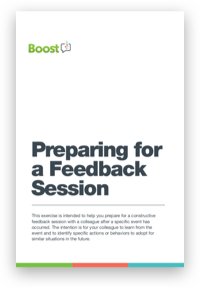Be Careful What You Ask For! Creating a Feedback Culture Takes Commitment

Our fast-changing world has heightened expectations for transparency, clarity and accountability at all levels of large organizations. In response, many C-level executives are looking to develop a feedback culture as a ‘quick win’ to improve performance. While in principle this is a good idea, feedback is more complex than it seems at first glance and, in most corporate cultures, giving and receiving feedback is far from the norm.
There are two main competing views about feedback.
- Advocates of positive psychology argue that feedback should focus on the individual’s strengths and that ‘constructive’ feedback can be threatening and hinder learning. They also argue that people are unreliable assessors of others and thus give feedback that is prejudicial and distorted.
- On the other hand, those supporting a ‘constructive feedback’ approach argue that both positive and critical feedback are required to raise awareness about how someone’s behaviours are perceived and to establish as factually as possible what are strengths and weaknesses in a given context.

Both of these perspectives highlight how difficult it is to create a feedback culture and to do it in a way that’s effective and beneficial to all in the organization. For feedback to be effective, there is an onus on both the giver and the receiver to make sure the process works and that the best possible insights are taken from the giving and receiving.
- The giver needs to remove as many obstacles as possible so the feedback can be heard. Clarity about intentions, accompanying emotions and accurate data about what was actually observed will significantly increase the chance of the feedback being taken on board. Having genuine empathy for the receiver and understanding their level of awareness and readiness for change will also go along way into making that feedback useful and meaningful to the receiver.
- The receiver should strive for open-mindedness and focus on the learning in the feedback, to extract insights from the discussion without being distracted by the ‘emotional spin’ that will most often accompany it. The receiver can then form a more accurate picture of reality, make better choices and alter their behaviour accordingly.
If your interest is in developing the habits and practices of effective feedback across an organization, please contact us and we’ll be happy to discuss the learnings from several deployments through our solution, Boost Leadership. If your need is more immediate, and you need to prep for a difficult feedback session, please download the guide below.

Download a copy of "Preparing for a Feedback Session" to read on the go, wherever you are.
DOWNLOAD NOW